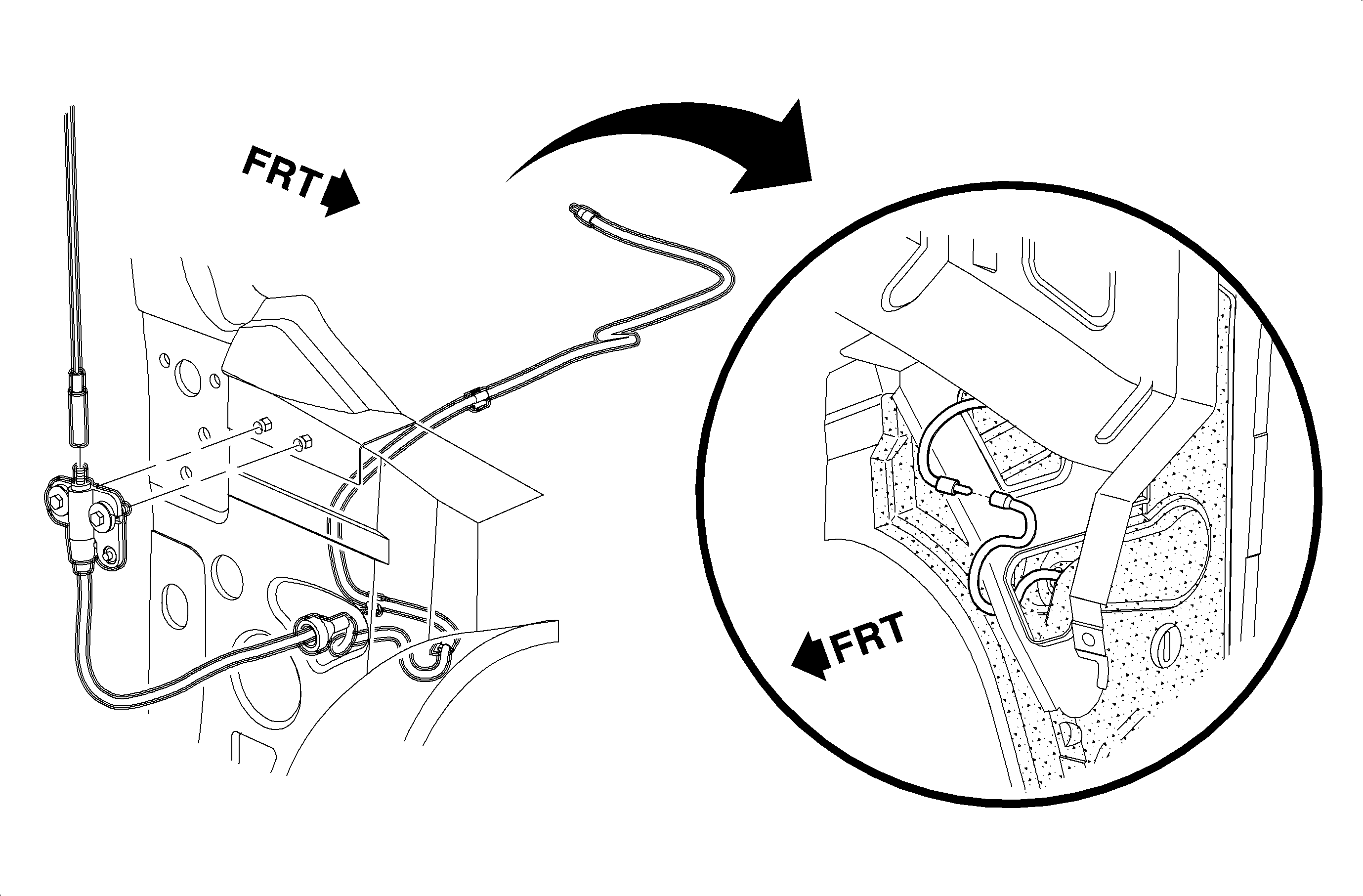Checking Radio Antenna Mast

Unplug antenna lead-in at back of radio and plug a test antenna into radio.
Make sure test antenna base is grounded to the vehicle chassis. Do not touch the mast.
Check radio reception in an area away from tall buildings, metal structures, power
lines, fluorescent lighting, and power tools. Tune to high and low ends of the dial
on both AM and FM, checking weak and strong station reception. Refer to
System Performance Check - Noise or Poor Reception
. If reception is OK, the problem exists
with antenna (verify the antenna mast is at the appropriate torque) and/or its lead-in
antenna cable. If reception is still poor with test antenna, check for aftermarket
equipment that may be causing complaint.
Checking Antenna Lead-In Cables
In case of continued reception or noise complaints, always check the lead-in
antenna cable with a digital multimeter (refer to the following illustration and chart).
If long jumper leads are not available, check center conductor continuity by jumping
the antenna coax cable to ground and checking for continuity from the center conductor
at radio to ground. The type of coaxial cable used is RG-62/U.
When checking resistance, cautiously wiggle the antenna lead-in tip and antenna
coax cable. Consistent readings from table should always be obtained. If not, some
portion of the antenna lead-in is intermittent and antenna lead-in should be replaced.
Also try:
| • | Running a braided ground strap to the antenna lead-in. |
| • | Changing the antenna lead-in. |
| • | Disconnecting the antenna lead-in to check resistance. |
| • | Check antenna in-line connection for corrosion or poor connection. |



